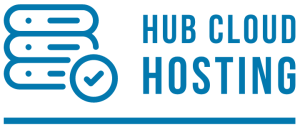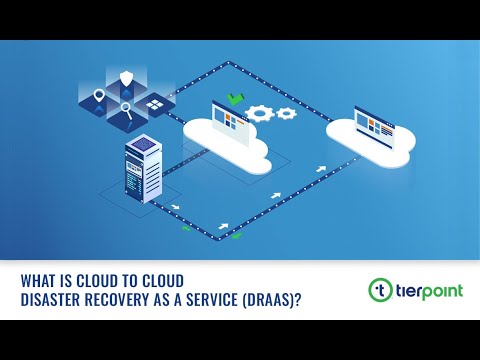Cloud hosting has become an increasingly popular choice for businesses seeking scalable and flexible IT solutions. Yet, with various service levels available, it is crucial for individuals and companies to understand the differences between them. In this article, the different service levels of cloud hosting will be explored, providing an insightful overview of the options available. Whether it is shared hosting, virtual private servers, or dedicated hosting, one can gain a deeper understanding of the service levels to make informed decisions for their specific needs.
Cloud Hosting Service Levels Explained
Cloud hosting has become an essential choice for businesses looking to leverage the scalability, flexibility, and cost-efficiency of cloud computing. However, navigating through the various service levels available in cloud hosting can be overwhelming. This article aims to provide a comprehensive explanation of the different service levels, their key features, benefits, and considerations for choosing the right service level.
Infrastructure as a Service (IaaS)
The Basics of IaaS
Infrastructure as a Service (IaaS) is the foundational service level in cloud hosting. It provides users with virtualized computing resources over the internet. With IaaS, businesses can outsource the underlying infrastructure including servers, storage, and networking, while retaining control over the operating systems, applications, and data.
Key Features of IaaS
Some of the key features of IaaS include:
- On-demand resource provisioning: Users can easily scale up or down their computing resources based on their requirements.
- Self-service management: Businesses have the freedom to manage their virtual infrastructure through a web-based interface or APIs.
- Pay-as-you-go pricing: Users are billed based on their actual resource usage, providing cost-efficiency and flexibility.
- High availability and reliability: IaaS providers typically have redundant infrastructure to ensure minimal downtime.
Benefits of IaaS
The benefits of IaaS include:
- Cost savings: By eliminating the need for on-premises infrastructure and its associated maintenance costs, businesses can achieve significant cost savings.
- Scalability: IaaS allows businesses to quickly and easily scale their resources up or down as needed, accommodating fluctuations in demand.
- Focus on core competencies: With IaaS, businesses can concentrate on their core competencies, while leaving the infrastructure management to the service provider.
- Disaster recovery: IaaS providers often have robust disaster recovery mechanisms in place, ensuring the safety and continuity of business operations.
Platform as a Service (PaaS)
Understanding PaaS
Platform as a Service (PaaS) is the next level of service in cloud hosting. PaaS provides a platform and environment for developers to build, deploy, and manage applications without worrying about the underlying infrastructure. The service provider manages the infrastructure and operating systems, allowing developers to focus on writing code and delivering applications.
Advantages of PaaS
Some of the advantages of PaaS include:
- Faster development cycle: PaaS offers pre-configured environments and ready-to-use development tools, enabling developers to accelerate the application development process.
- Automatic scalability: PaaS platforms can automatically scale the underlying infrastructure based on application demands, without requiring manual intervention.
- Reduced operational burden: By offloading infrastructure management tasks to the service provider, businesses can reduce administrative overhead and focus on application development and innovation.
- Collaboration and integration: PaaS platforms often provide collaboration tools and integration capabilities, fostering teamwork and simplifying the development workflow.
Use Cases for PaaS
PaaS is particularly suitable for:
- Web application development: PaaS platforms provide a conducive environment for developing and deploying web applications.
- Mobile application development: PaaS platforms offer tools and frameworks specifically designed for building mobile applications.
- DevOps practices: PaaS greatly facilitates implementing DevOps practices by automating deployment and providing continuous integration and delivery capabilities.
Software as a Service (SaaS)
Overview of SaaS
Software as a Service (SaaS) is the highest level of service in cloud hosting. SaaS allows users to access and use applications over the internet, without the need for installation or local infrastructure. The service provider hosts and maintains the applications, providing a wide range of software solutions that cater to various business needs.
Benefits of SaaS
The benefits of SaaS include:
- Ease of use and accessibility: SaaS applications can be accessed from any device with an internet connection, making them highly accessible and user-friendly.
- Lower upfront costs: Instead of purchasing software licenses, SaaS users typically pay a subscription fee, reducing upfront costs and making budgeting easier.
- Automatic updates and maintenance: SaaS providers handle updates and maintenance, ensuring that users always have access to the latest version of the software.
- Enhanced collaboration and scalability: SaaS applications often come with built-in collaboration features, enabling teams to work together seamlessly. Additionally, SaaS solutions are inherently scalable and can accommodate growing business needs.
Examples of SaaS Applications
SaaS applications cover a wide range of business functions. Some popular examples include:
- Customer Relationship Management (CRM) platforms such as Salesforce and HubSpot.
- Enterprise Resource Planning (ERP) systems like Oracle NetSuite and SAP S/4HANA Cloud.
- Productivity suites including Google Workspace (formerly G Suite) and Microsoft Office 365.
- Communication and collaboration tools like Slack and Zoom.
- Project management software such as Asana and Trello.
Service Level Agreements (SLAs)
What is an SLA?
A Service Level Agreement (SLA) is a contract between the cloud service provider and the user that defines the expected level of service. SLAs typically outline the performance metrics, uptime guarantees, and remedies or compensation in the case of service disruptions or failures.
Components of an SLA
Typical components of an SLA include:
- Service Description: Clearly defines the scope of services provided by the cloud hosting provider.
- Performance metrics: Specifies the expected performance indicators such as response times, throughput, and availability.
- Uptime and downtime: Outlines the guaranteed uptime percentage and the allowable downtime.
- Support and maintenance: Describe the levels of support and maintenance provided, including response and resolution times.
- Remedies and compensation: States the remedies or compensation to be provided by the service provider in the event of service failures.
SLA Metrics and Guarantees
SLA metrics vary depending on the service level and provider. Some common metrics include:
- Uptime percentage: Typically expressed as a percentage, this metric indicates the amount of time the service is expected to be available.
- Response time: Measures the time taken for the system to respond to a user’s request.
- Resolution time: This represents the time required to resolve an issue or incident.
- Service credits: In case of violated SLAs, service credits may be provided as compensation to the user.
Reliability and Uptime
Importance of Reliability in Cloud Hosting
Reliability is a critical factor when considering cloud hosting services. A reliable cloud hosting provider ensures that the services and applications hosted on their infrastructure are consistently accessible and performant. Reliable service providers implement robust infrastructure, redundancy measures, and proactive monitoring to minimize service disruptions and maintain high availability.
Understanding Uptime
Uptime refers to the percentage of time that a cloud hosting service is available and accessible to users. Higher uptime percentages indicate a more reliable service. It is essential for businesses to understand the guaranteed uptime offered by cloud hosting providers, as this directly impacts their own operations and customer experiences.
Downtime and Recovery Time Objectives
Downtime refers to the period during which a cloud hosting service is unavailable. Recovery Time Objective (RTO) defines the target time for restoring service after a failure or disruption. Service providers often document their expected downtime and recovery time objectives in SLAs. Understanding these objectives is crucial for businesses to assess the potential impact and plan for contingencies.
Scalability and Performance
Scalability in Cloud Hosting
Scalability is a key advantage of cloud hosting and enables businesses to handle fluctuations in demand and scale their resources accordingly. Cloud hosting service providers offer scalability options that can be adjusted in real-time. Vertical scalability involves increasing or decreasing the resources of a single server, while horizontal scalability involves adding or removing servers to distribute the load.
Performance Metrics
Performance metrics are essential for evaluating the efficiency and effectiveness of cloud hosting services. Some common performance metrics include:
- Response time: Measures the time taken for the system to respond to a user’s request.
- Throughput: Indicates the amount of work a system can handle within a given timeframe.
- Latency: Refers to the time it takes for a data packet to travel from its source to its destination.
Monitoring and Optimization
Proactive monitoring and optimization are crucial in maintaining optimal performance in cloud hosting environments. Service providers employ various monitoring tools and techniques to ensure the smooth functioning of their infrastructure. Additionally, businesses can optimize their applications and resources to maximize performance and minimize resource consumption.
Security and Data Protection
Security Measures in Cloud Hosting
Security is a top concern for businesses considering cloud hosting. Cloud hosting providers implement various security measures to protect their infrastructure and customer data. These measures may include:
- Firewalls and network segmentation: Protecting the cloud environment from unauthorized access and network threats.
- Data encryption: Encrypting data at rest and in transit to ensure confidentiality and integrity.
- Identity and access management: Implementing robust authentication and authorization mechanisms to control access to resources.
- Intrusion detection and prevention systems: Monitoring for malicious activities and taking proactive measures to prevent them.
Data Privacy and Compliance
Data privacy and compliance are critical considerations when entrusting data to a cloud hosting provider. Service providers must adhere to relevant data protection regulations, such as the General Data Protection Regulation (GDPR), and implement appropriate data privacy measures. It is essential for businesses to understand the data privacy practices of their cloud hosting provider and ensure compliance with applicable laws and regulations.
Backup and Disaster Recovery
Cloud hosting providers typically offer backup and disaster recovery solutions to ensure data integrity and business continuity. Regular backups and replication mechanisms are employed to safeguard data against loss or corruption. Businesses should assess the backup and recovery capabilities of potential service providers to ensure their data is adequately protected and can be restored in the event of a disaster.
Customer Support and Technical Assistance
Availability of Customer Support
A cloud hosting service level is only as good as its customer support. Businesses should consider the availability of customer support and technical assistance before selecting a provider. Ideally, the service provider should offer 24/7 support to address any issues or concerns promptly.
Support Channels
The availability of multiple support channels is beneficial for businesses, as it allows them to choose the most convenient method of reaching out for assistance. Common support channels include phone, email, live chat, and ticketing systems.
Response and Resolution Times
Service providers typically outline their response and resolution times for support requests in their SLAs. Businesses should carefully review these metrics to ensure they align with their own requirements and expectations. Quick response and resolution times are crucial in minimizing business disruptions and ensuring the smooth operation of cloud-hosted applications.
Choosing the Right Service Level
Assessing Your Requirements
Before selecting a service level, businesses should assess their specific requirements and objectives. Factors to consider include:
- Application needs: Determine whether the application requires low-level infrastructure control (IaaS), platform capabilities (PaaS), or complete software solutions (SaaS).
- Scalability requirements: Consider the expected growth and fluctuations in demand to determine the required scalability options.
- Security and compliance needs: Assess the sensitivity of the data being hosted and identify any compliance requirements.
- Budgetary constraints: Evaluate the cost implications of each service level and ensure alignment with the available budget.
Considerations Before Selecting a Service Level
When selecting a service level, businesses should consider the following:
- Provider reputation: Evaluate the reputation and track record of the service provider, considering factors such as reliability, security track record, and customer reviews.
- SLA terms: Carefully review the SLA terms, paying attention to uptime guarantees, performance metrics, and support provisions.
- Data jurisdiction: Consider the location of the provider’s data centers and ensure they comply with relevant data protection laws and regulations.
- Integration possibilities: Assess how well the chosen service level integrates with existing systems and applications.
Factors to Evaluate Providers
When comparing different cloud hosting providers, businesses should evaluate the following factors:
- Reliability and uptime: Consider the guaranteed uptime, past performance, and infrastructure redundancy measures.
- Security measures: Assess the provider’s security practices, certifications, and compliance with data protection regulations.
- Scalability options: Evaluate the scalability offerings and determine if they meet the business’s current and future needs.
- Price and value: Compare pricing models and consider the overall value provided by the service level.
- Support and assistance: Research the provider’s customer support reputation and assess their responsiveness and expertise.
In conclusion, choosing the right service level in cloud hosting requires careful consideration of various factors such as infrastructure requirements, scalability needs, security measures, and support provisions. By understanding the basics, key features, benefits, and considerations of each service level, businesses can make informed decisions that align with their specific needs and objectives.








